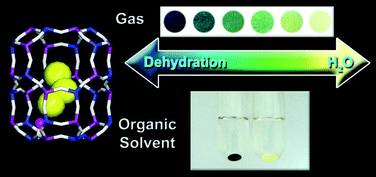Sensor material based on occluded trisulfur anionic radicals for convenient detection of trace amounts of water molecules†
Abstract

* Corresponding authors
a
School of Chemistry and Chemical Engineering, Shanghai Jiao Tong University, Shanghai, People's Republic of China
E-mail:
chemcj@sjtu.edu.cn
Fax: (+86)-21-5474-1297
b State Key Laboratory of Inorganic Synthesis and Preparative Chemistry, College of Chemistry, Jilin University, Changchun, People's Republic of China

 Please wait while we load your content...
Something went wrong. Try again?
Please wait while we load your content...
Something went wrong. Try again?
Q. Gao, Y. Xiu, G. Li and J. Chen, J. Mater. Chem., 2010, 20, 3307 DOI: 10.1039/B925233A
To request permission to reproduce material from this article, please go to the Copyright Clearance Center request page.
If you are an author contributing to an RSC publication, you do not need to request permission provided correct acknowledgement is given.
If you are the author of this article, you do not need to request permission to reproduce figures and diagrams provided correct acknowledgement is given. If you want to reproduce the whole article in a third-party publication (excluding your thesis/dissertation for which permission is not required) please go to the Copyright Clearance Center request page.
Read more about how to correctly acknowledge RSC content.
 Fetching data from CrossRef.
Fetching data from CrossRef.
This may take some time to load.
Loading related content
